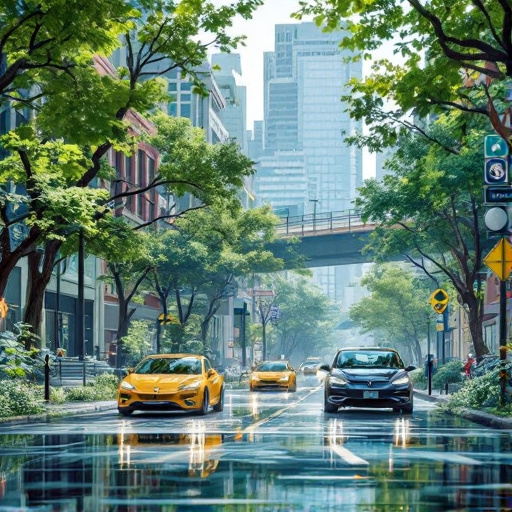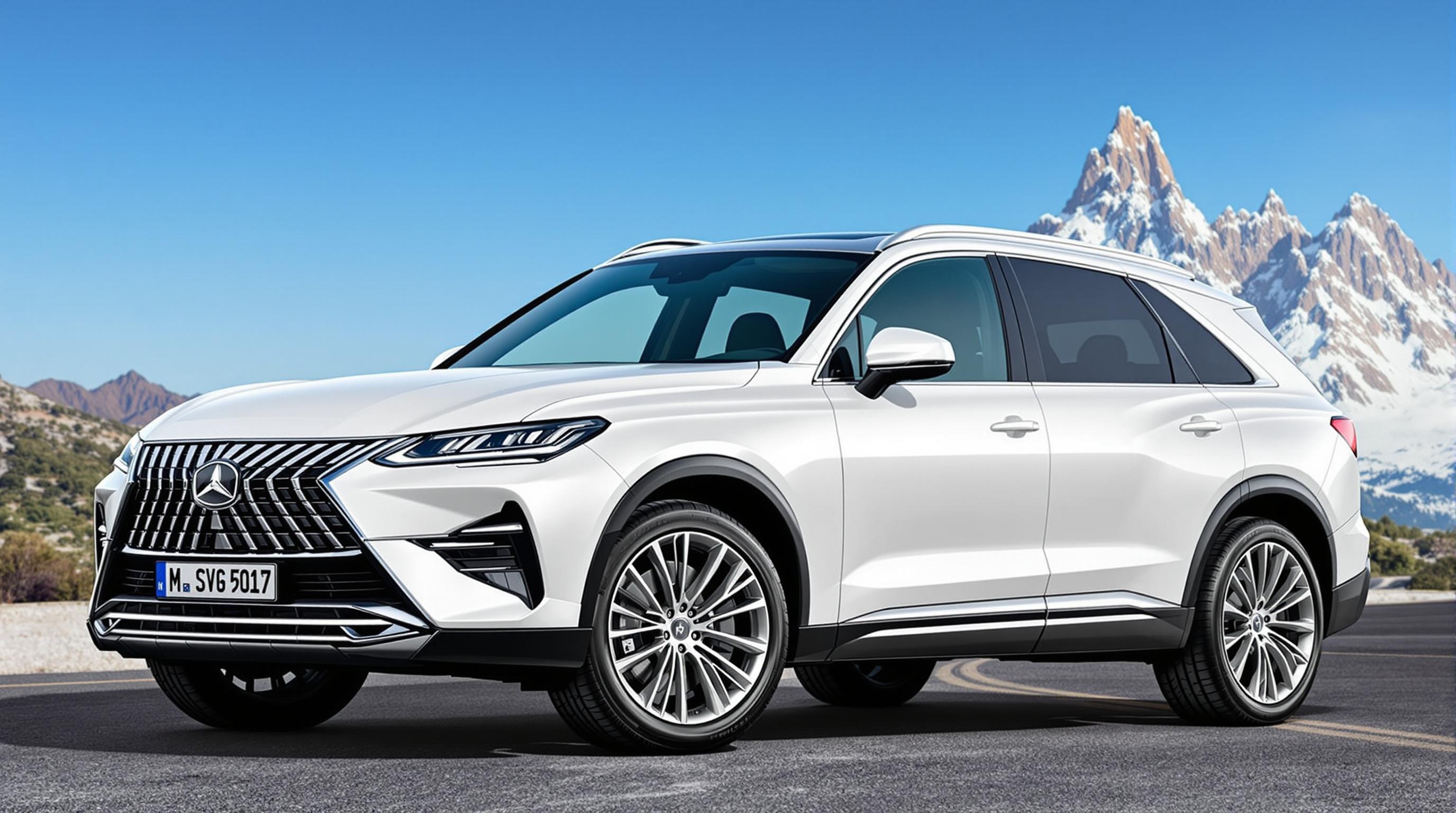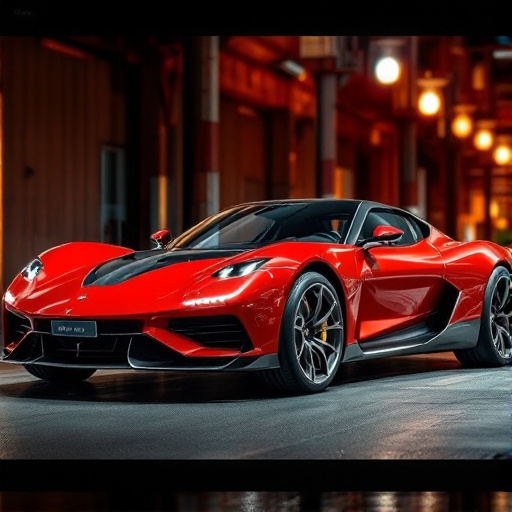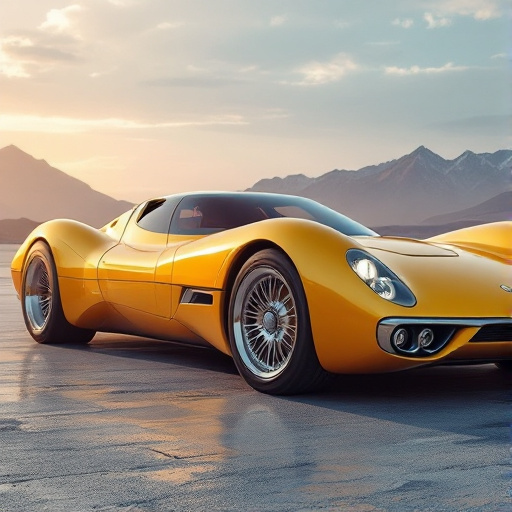Related Articles
- Charged Up! How Electric Vehicles are Reshaping Urban Wildlife Habitats and Biodiversity
- Navigating the Used Car Market: Uncovering the Secrets of 'As-Is' Sales for Savvy Buyers
- The Rise of Electric Car Pop-up Shops: A New Frontier for Urban Retail Experiences
- The Forgotten Art of DIY Car Maintenance: Rediscovering Skills in a Tech-Driven World
- Electric vs. Vintage: The Battle for Enthusiasts' Hearts in the Age of Latest Car Models
- The Rise of the 'Car Review Influencer': How Social Media is Shaping Auto Buying Decisions
The Unseen Impact of Electric Cars on Urban Wildlife: A Deep Dive into Nature's New Neighbors
The Unseen Impact of Electric Cars on Urban Wildlife: A Deep Dive into Nature's New Neighbors
Electric cars are revolutionizing urban transportation, but their introduction carries hidden consequences for local wildlife. This article takes a deep dive into how these eco-friendly vehicles are changing the habitats, behaviors, and survival tactics of urban animals, often in unexpected ways.
The Quiet Revolution: Unpacking the Impact
Imagine walking through a bustling city—red lights flashing, horns honking, and engines roaring. Suddenly, there’s relative silence. Enter the electric car, a vehicle often touted for its environmental benefits. However, the hush that accompanies these cars ushers in a new era for urban wildlife. Studies show that urban wildlife is often sensitive to noise pollution, with a 2019 study indicating that certain birds avoided areas with higher sound levels. With electric vehicles (EVs) being quieter than their gasoline-powered counterparts, could this change their behavior and habitat preferences?
Statistics Speak: The Numbers Behind Change
The shift towards electric vehicles is not just anecdotal. In 2022, about 19% of new car sales in the United States were electric, marking a dramatic increase from previous years—up from just 1% in 2011 (Statista). With millions of gasoline vehicles transitioning to electric, the potential changes in urban wildlife behavior could be significant. As cities work toward sustainability, it's crucial to monitor not only human interactions with EVs but also how wildlife responds.
The Case of the City Sparrow
Speaking of wildlife, let’s talk about the city sparrow. Once a ubiquitous presence in urban settings, these agile little birds have seen their populations wane in many areas. A fascinating case study from Chicago showed that sparrows began to nest in areas with fewer gas-powered vehicles after the city's implementation of a new electric car initiative. Researchers observed that their presence increased as the overall noise levels decreased.
Behavioral Shifts: From Hiding to Thriving
Consider this: with EVs gliding silently down streets, many animals may feel emboldened to venture out. Animals like raccoons and possums could be more inclined to explore urban landscapes previously deemed too hectic. Bunny hop over to the quieter streets of San Francisco, where local wildlife experts report an uptick in rabbit populations in areas with significant EV usage. In this case, the once-feared hustle of city life became less intimidating for these critters. Isn’t it ironic that while we combat climate change, we may unknowingly improve urban ecosystems? It’s like rooting for a sport where the home team is… a bunch of bunnies!
Challenges Faced by Urban Wildlife
But hold your horses—these changes are not purely beneficial. Electric vehicles, despite their quieter operation, can create challenges for wildlife. With a substantial increase in their use, there's also an uptick in the number of charging stations appearing in previously wild areas. While it’s great that we’re fostering clean energy, localized habitat fragmentation can occur. For example, a field that once was a habitat for small mammals might now be reduced to small patches dotted with charging stations.
Feral Animals: The Uninvited Guests
Urban environments often attract feral populations, including cats and dogs. These animals can become more prevalent as urban areas undergo changes to accommodate electric vehicle infrastructure. A study published in the journal *Urban Wildlife* highlighted that feral cats adjusted their territories in response to increasing EV infrastructures—often encroaching on wildlife habitats. The presence of electric cars may lead to an ecosystem imbalance, with predator pressure rising on vulnerable species in the area.
Human Interactions: A Double-Edged Sword
As we embrace the electric car revolution, we also must reflect on how our habits change. Think about your own experiences while driving. Do you issue a gentle "toot" with the horn to alert pedestrians, or do you glide silently by, allowing them to be blissfully unaware of your approach? In studies conducted throughout urban centers, researchers are noting increased interactions between humans and wildlife as these vehicles leave little impression on the environment. One such study proposed that while the noise pollution is reduced, the chances of unsettling wildlife through other means—like increased pedestrian encounters—may be heightened.
How Urban Planning Plays a Role
Planners and conservationists are at a crossroads. Strategies that promote EVs also need to focus on wildlife conservation. Imagine a city that integrates wildlife corridors alongside charging stations. Wildlife experts suggest that by designing cities with animal-friendly spaces—like greenways and urban parks— planning could balance the desire for electric vehicle infrastructure while promoting biodiversity. Why not make our cities habitats, not just habitats of humans?
Learning from Technology: Innovations for Animals
Speaking of creativity, technology can also assist urban wildlife. Learning from the sound-reducing technologies used in electric vehicles, innovators are now working on wildlife-friendly solutions in urban spaces. For example, wildlife sound detection systems can alert nearby drivers of animal crossings, reducing vehicle-wildlife collisions. This shift in approach could mitigate potential risks to wildlife while still embracing urban electric transit.
Bringing Back the Buzz: Creating Venues for Wildlife
Picture a suburban neighborhood with abundant greenery, dotted with charging stations, flowers blooming, and pathways for rabbits, birds, and bees all thriving. What if we built eco-friendly havens—think of them as “wildlife parks” integrated into the urban layout? These spaces could allow for natural habitats while accommodating human endeavors. The increase in plant species diversity could support a variety of animals, from insects to birds, making a city not just a place to live for humans but a vibrant ecosystem for all.
Personal Stories from the Urban Jungle
Let’s switch gears and hear from someone who experienced all this firsthand—a local resident. Emily Johnson, a stargazer from Seattle, shared her amusing story about how she tried to spot the city’s nocturnal wildlife. With EVs becoming popular, she noticed that raccoons started prancing confidently across her quiet street. “It’s as if they knew they could take a stroll without worrying about being scared off by loud cars,” she laughed. “Now I even keep cat food out for them and watch the parade!” It turns out, her neighborhood was unknowingly a wildlife hotspot thanks to the transition to electric cars.
Future Perspectives: How Can We Collaborate With Nature?
The dialogue around electric vehicle usage and wildlife conservation must continue to evolve. Educational programs can boost community investment in both electric vehicles and wildlife habitats. Imagine workshops teaching people about the species they share their neighborhoods with, sparking interest in preserving the ecosystems that coexist with their new electric friends. Engaging local communities can create stewards of urban nature, turning leisurely drives in EVs into an opportunity for wildlife appreciation.
The Bottom Line: A Harmonious Coexistence
The move to electric vehicles is undoubtedly a step towards sustainability, but let’s not forget to maintain the balance between our needs and those of our furry and feathered pals. As we transition into this brave new world, awareness and collaboration can usher in a flourishing environment where both humans and wildlife thrive together. After all, nature has a way of adapting, and we owe it to our city's bottleneck of critters to help them along the way.
A Call to Action
So, audiophiles, lovers of nature, and city dwellers alike—what can you do? Join community initiatives aimed at supporting wildlife, advocate for thoughtful urban planning that integrates EV stations with greenspaces, and continuously educate yourselves about the ecosystems around you. If we’re lucky, the laughter of children mingling with the sounds of songbirds might just become the new soundtrack to our cities. Let’s embrace the coexistence that modern innovations afford us, giving our urban wildlife the quiet they deserve.




